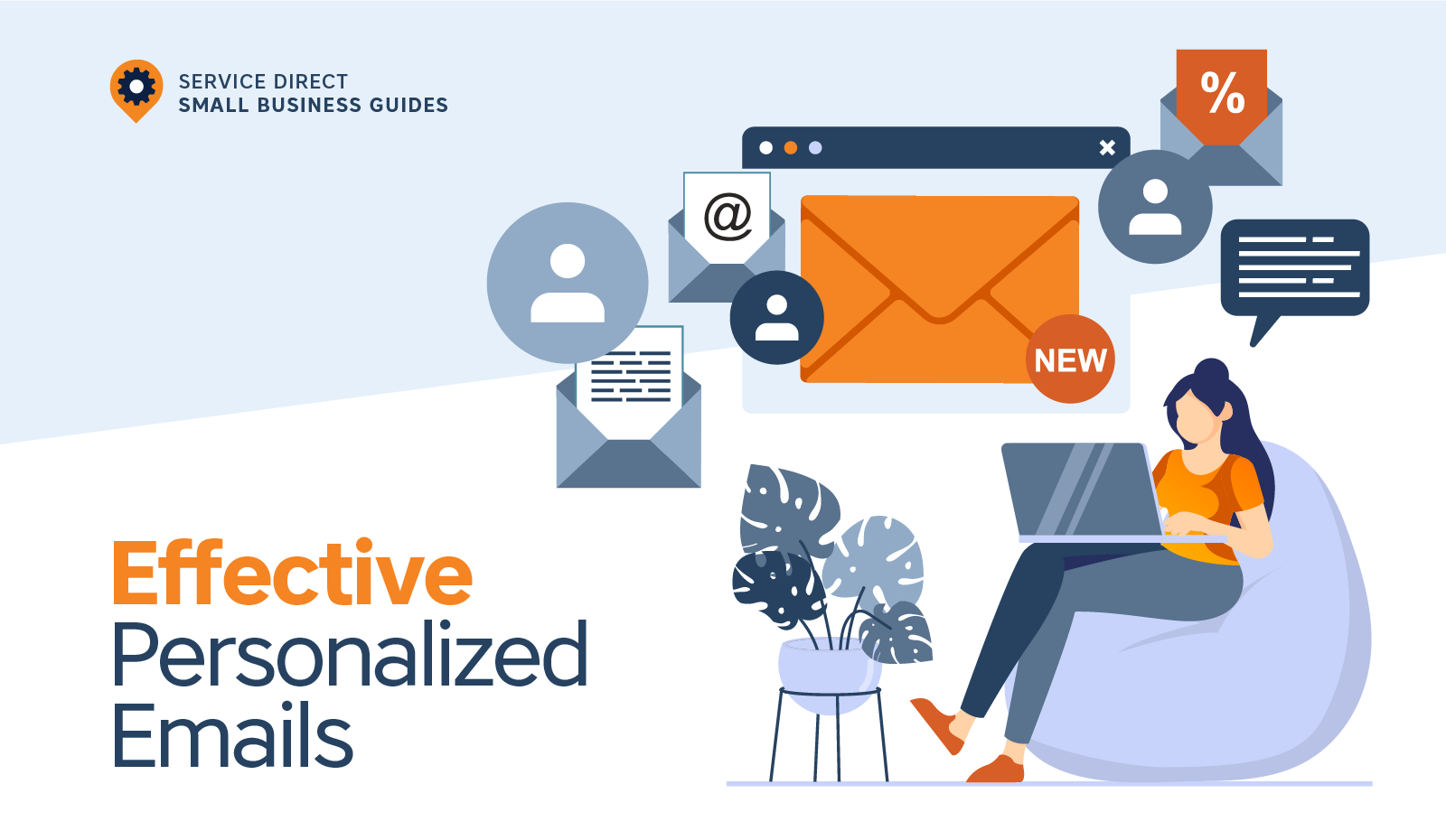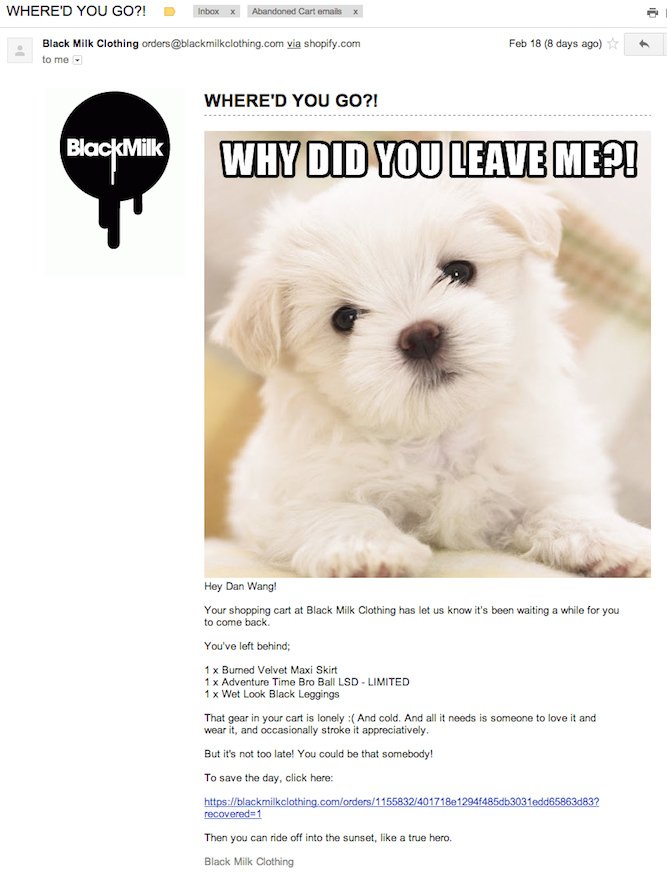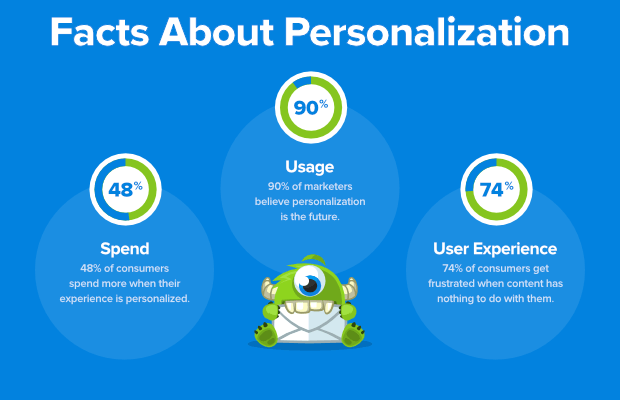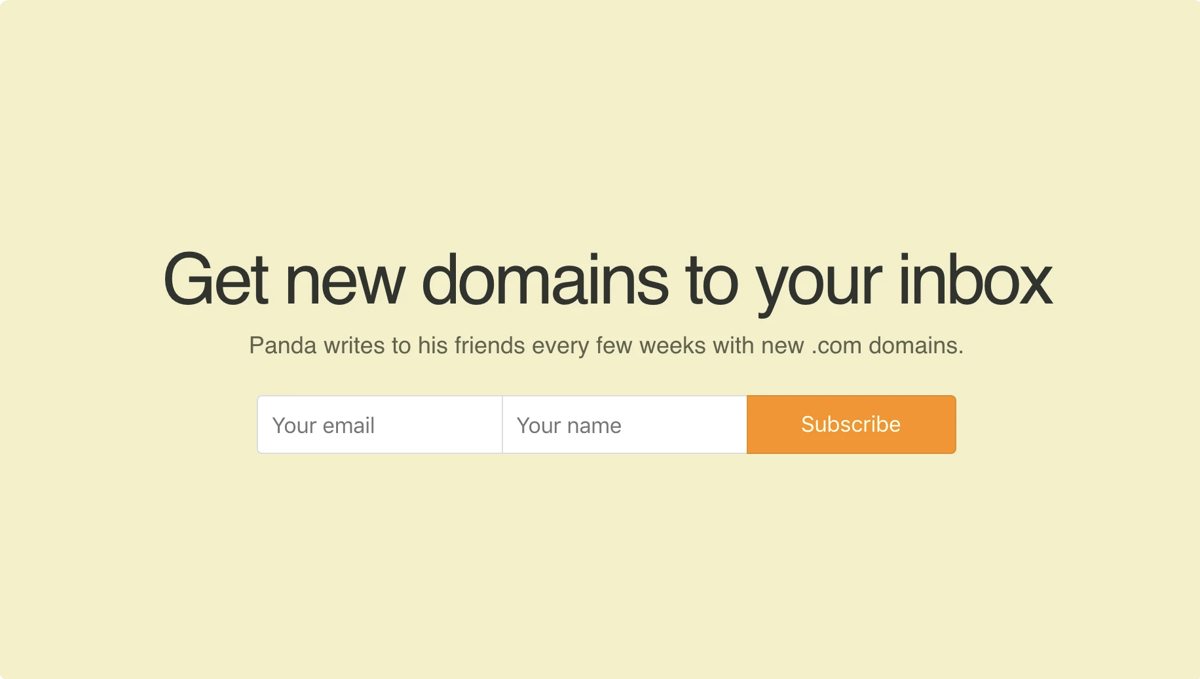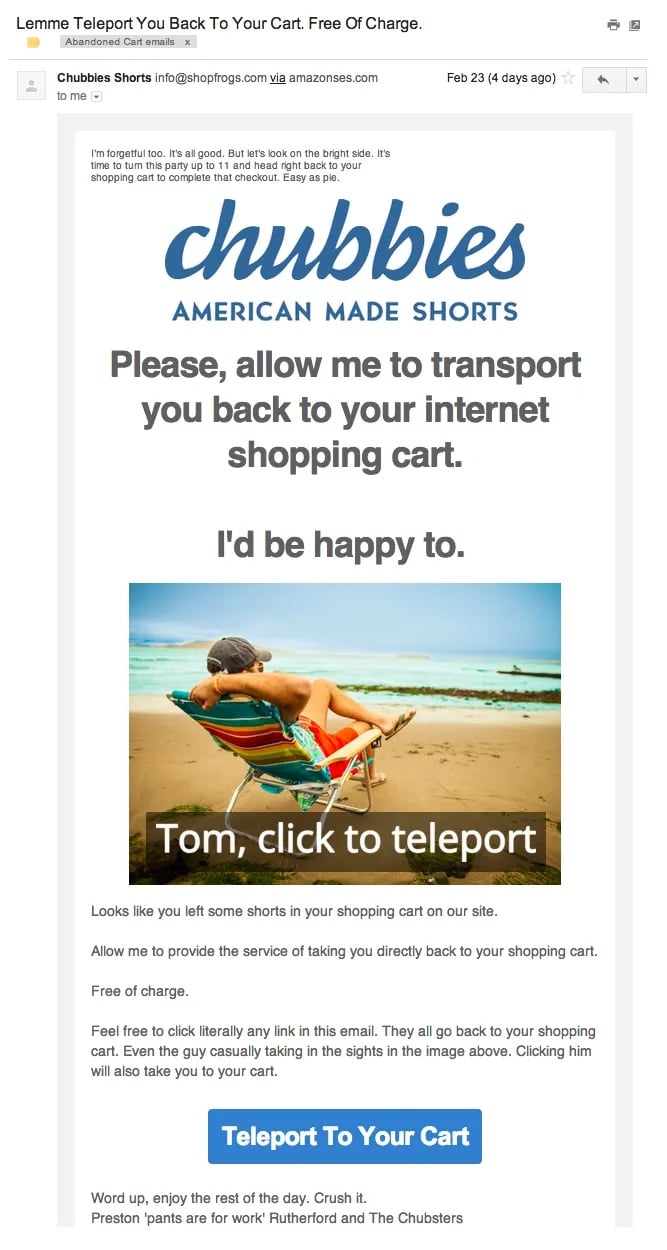How to Personalize Emails to Make Them More Effective
Did you know that personalized emails get six times the response rate of non-personalized emails? That's because email personalization is one of the most effective ways to increase leads and conversions.
When you take the time to personalize an email campaign for each individual recipient, they feel special and appreciated. This increases their likelihood of converting into a customer.
Despite this, we recently surveyed 274 small business marketers and discovered that only 25% of those that reported doing email marketing used personalization tokens in their emails.
So while it’s considered best practice within the email marketing space, 3 our 4 small businesses aren’t taking advantage of personalization when it comes to their email marketing.
In this article, we will discuss all the tips you need to know about email personalization! We'll explain what it is, why it's important, and how to implement it in your own email campaigns.
So whether you're just starting out with email marketing or you're looking for ways to improve your current strategy, read on for some valuable tips!
What is Email Personalization?
When it comes to email marketing, personalization is key. Email personalization is the process of tailoring the content of an email to the specific needs and interests of the recipient.
There are two goals of email personalization:
1. To increase the likelihood that the recipient will actually read and engage with the email
2. To make the email more relevant and valuable to the recipient, thus increasing the chances of conversion
By taking the time to personalize emails, businesses can achieve both of these goals and reap the rewards of higher engagement and conversion rates.
Top 3 Benefits of Email Personalization
Email personalization has become increasingly popular in recent years as a way to improve email performance.
By adding individualized elements such as the recipient's name or location, email marketers can improve email open rates, engagement, and ultimately, revenue.
In the same survey mentioned above, we found that the most common challenge amongst small business marketers when it came to their email marketing was optimizing their email KPIs.
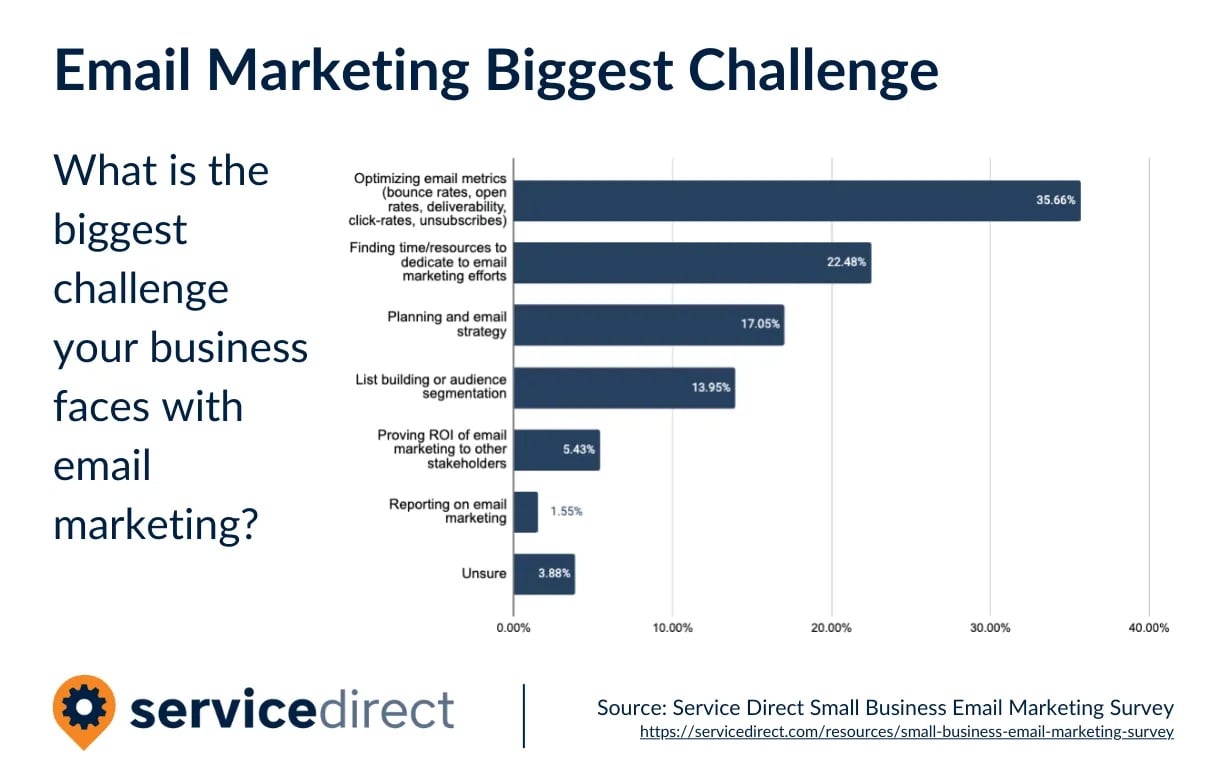
So if you are in the same boat, and struggling to improve your email metrics and not using personalization, here’s just some of the benefits it can have in that regard…
Increase Open Rates
Email personalization can be a powerful tool for increasing open rates. Compared to non-personalized emails, personalized promotional emails have an average open rate of 29% higher than the non-personalized emails.
By tailoring messages to specific recipients, businesses can show that they value their customers and are willing to invest the time to understand their needs.
Additionally, personalization can help email messages stand out in a crowded inbox, increasing the chances that they will be noticed and opened.
Finally, personalizing email content can also make recipients feel more valued and important, nudging them towards opening the message. If that's not enough to convince you to start personalizing your own emails, 82% of marketers using email personalization have reported higher open rates.
When used correctly, email personalization can be a powerful way to increase open rates and build stronger relationships with customers.
Build Revenue
Segmented, targeted, and personalized emails generate 58% of all revenue. Email personalization can build revenue in several ways.
First, it helps to create a rapport with the customer. When customers feel like they are being addressed personally, they are more likely to pay attention to the email and its contents.
Second, email personalization can help target specific customers with specific products or services that they are more likely to be interested in.
By sending highly personalized emails, businesses can increase the chances of making a sale and boost their bottom line.
Finally, email personalization can also help build customer loyalty over time. Customers who feel like they are being treated as individuals are more likely to stick with a company and continue doing business with them in the future.
Ultimately, email personalization is a powerful tool that can help businesses increase sales and build long-term customer relationships.
Improve Customer Engagement
By addressing your recipients by name and tailoring your content to their specific interests, you can create a more engaging and interactive customer experience. 74% of marketers reported email personalization and targeted messages increasing customer engagement.
Personalization also helps you to stand out in a crowded inbox. With so many businesses vying for attention, email personalization can help you to make a lasting impression on your customers.
How to Personalize Your Emails to Increase Leads
Now that you understand the goals and benefits of email personalization, where do you start? What steps need to be taken in order to see success with email personalization?
After deciding your individual email marketing goals, you can create a plan using tools, organization, and more. Here are our top must-haves for successful email personalization!
Use Necessary Data
When done correctly, email personalization can help businesses achieve a variety of goals, including improved email deliverability, higher open rates, and increased click-through rates. There are several steps involved in email personalization, but the most important step is using necessary data into the email marketing platform.
Email Subscribe Forms
In order to personalize email content, businesses must first gather data about their subscribers. This data can be collected through email subscribe forms, which should be placed prominently on the website.
The forms should be simple and easy to fill out, and they should collect data such as the subscriber's name, email address, and interests. Other necessary data for successful email personalization includes purchase history, demographic information, and click-through rates.
By using this data, businesses can create email content that is tailored to the individual subscriber, resulting in a higher rate of engagement and more leads.
Website Behavior Tracking
Website behavior tracking can provide valuable insight into what potential customers are interested in and where they are in the purchasing journey. This information can be used to send targeted email content that speaks directly to their needs.
As an example, if you are a CPA firm and you have a prospect that is devouring content about payroll taxes for LLCs, would it make sense to send them emails with content about personal income taxes? Of course not, give them what they are clearly interested in!
Take Advantage of Integrations
Email list integrations are a way of connecting email lists with other software, typically in order to automate email personalization.
Collecting data through these means is crucial to email personalization because it allows businesses to send more relevant, targeted content to their subscribers.
Additionally, integrations can help businesses keep their data clean and organized, which is crucial for accurate email personalization.
Behavioral Segmentation
Behavioral segmentation is important because it allows you to tailor your messages to the specific needs and interests of your customers.
This, in turn, can lead to higher conversion rates and more loyal customers. So, what are the right questions to ask when using behavioral segmentation? Here are three examples:
1. What are the goals of my email campaign?
2. Who is my target audience?
3. What type of email will resonate best with my target audience?
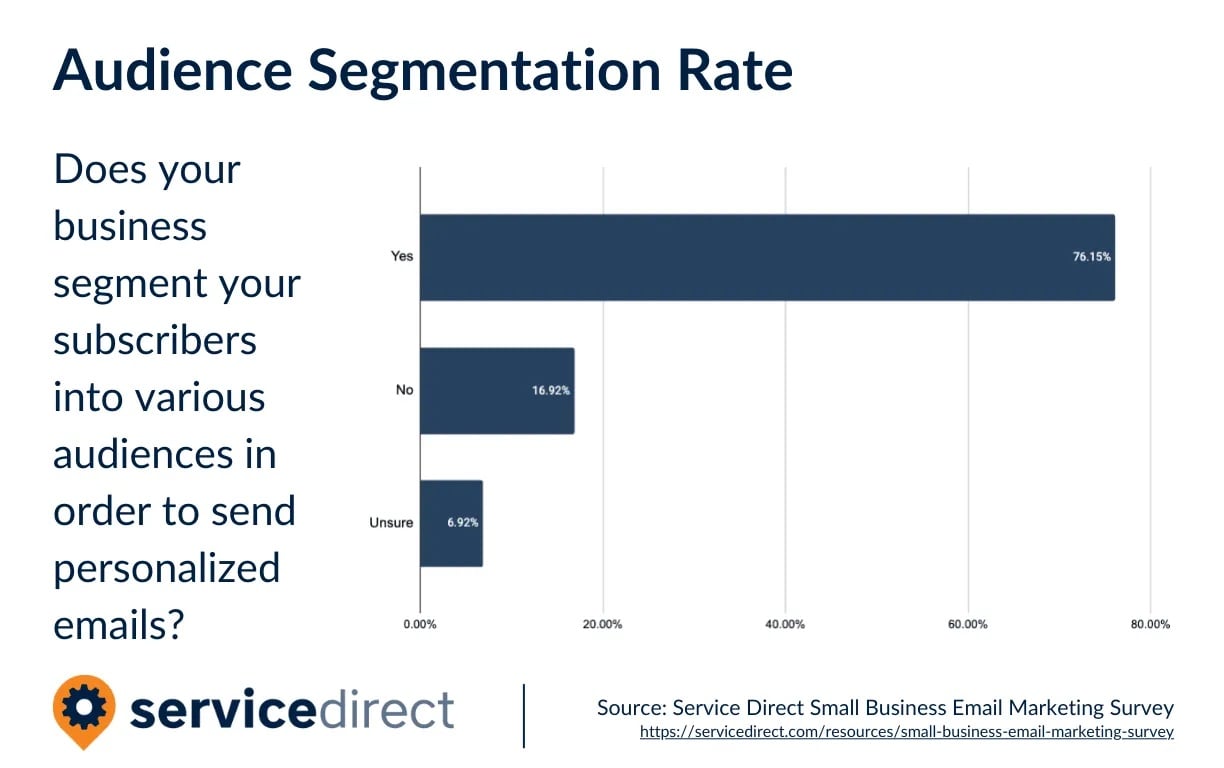
Behavioral segmentation involves grouping together customers who exhibit similar behaviors. This could include things like purchase history, past interactions with your company, or even engage behavior ( opening/clicking emails, etc).
Once you have grouped together customers with similar behaviors, you can then start to create email content that is tailored specifically to each group.
For example, let's say you own a sporting goods store and you have two groups of customers: those who have previously purchased footballs from your store, and those who have not.
You could send an email to the first group that contains information about new footballs that have just arrived in-store, along with a coupon for 10% off their next purchase.
On the other hand, you might send an email to the second group that contains general information about your store, along with a coupon for 20% off their first purchase.
As you can see, behavioral segmentation allows you to send much more targeted and effective email content.
So next time you're planning an email marketing campaign, take some time to think about your recipients' behaviors. By segmenting your audience and tailoring your content accordingly, you'll be able to achieve much better results.
Personalize Your Content
As a business professional, you know that email is a powerful tool for marketing and lead generation. However, in order to be truly effective, your email content must be personalized.
Here are four steps you can take to personalize your email content and increase your leads:
Preview Text
One way to personalize email content is through the use of preview text. Preview text is the text that appears in the email inbox below the subject line, and it should be used to grab the reader's attention and encourage them to open the email.
![]()
In order to make preview text more effective, try to make it specific to the recipient and include a call-to-action.
Here is an example of how NOT to do email preview text. As you can see, the sender did not provide personalized preview text, so in lieu of information exclusively for me, it's just non-sense.
![]()
What are the odds this email is getting opened/read? Not good, Bob.
Subject Line
Another way to personalize email content is through the use of subject lines. Subject lines should be sharp and to the point, as they are often one of the first things that recipients will see in their inbox.

However, they should also be personalized in order to stand out from other emails. For example, including the recipient's name or company in the subject line can be a great way to grab their attention.
Email Copy
The email copy itself can also be personalized in order to increase leads. This can be done by addressing the recipient by name, tailoring the content to their specific interests, or even offering a discount or special offer that is relevant to them.

Additionally, email copy should be clear and concise, as recipients are likely to skim through it rather than read it word for word.
Images
Images can also be used to personalize email content. Including images that are relevant to the recipient or their interests can help to capture their attention and make them more likely to engage with the email.
Additionally, images can be used as a way to add visual interest to an email and make it more visually appealing.
Use Email Automation
Email automation can help business professionals increase leads by reducing the amount of time spent on email communications and by increasing the chances that email communications will be successful.
It can also help to reduce the chances of email communication errors. By automating email communications, businesses can send highly personalized messages to each individual lead, increasing the chances of conversion.
There are a number of email automation tools available, each with its own set of features and capabilities. Tools like Mailmunch and Omnisend are a great place to get started.

Use Subscriber Tags
Subscriber tags are a great email marketing strategy because they allow you to collect data about your subscribers and use it to create more targeted and personalized email content.
By using subscriber tags, you can segment your list into different groups based on their interests, needs, or behaviors. This allows you to send more relevant and targeted email content to each group, which can lead to higher conversion rates.
In addition, subscriber tags can also be used to trigger automatic email sequences based on subscriber behavior. For example, if someone subscribed to your email list but never opened your emails, you could trigger a sequence of email messages designed to re-engage them.
Used properly, subscriber tags can be a powerful tool for increasing leads and conversions from your email list. Here’s an example of how to automatically create subscriber tags using ConvertKit:

Use Dynamic Content
Email personalization is a term that refers to the customization of email content to match the specific needs and interests of the email recipient. Dynamic content is a type of email personalization that allows you to insert different content into your email depending on who the email is being sent to.
This is important because it allows you to tailor your message to each individual recipient, making it more likely that they will engage with your email and ultimately become a lead.
There are many different ways to use dynamic content in your email, such as inserting different images, videos, or even CTAs. The most important thing is to make sure that the dynamic content you include is relevant to the recipient and aligned with their interests.
By doing this, you can increase leads and conversions from your email campaigns.
Conclusion
Email personalization is a powerful way to show your customers that you know them and understand their needs. When done correctly, email personalization can result in increased sales and better customer retention rates.
Segmenting your email list is essential for delivering the most relevant content to each individual subscriber. Using automation allows you to target subscribers with laser precision.
And finally, always make sure you have the necessary data in order to create personalized emails that are truly relevant to your customers. Are you ready to put these tips into action?

